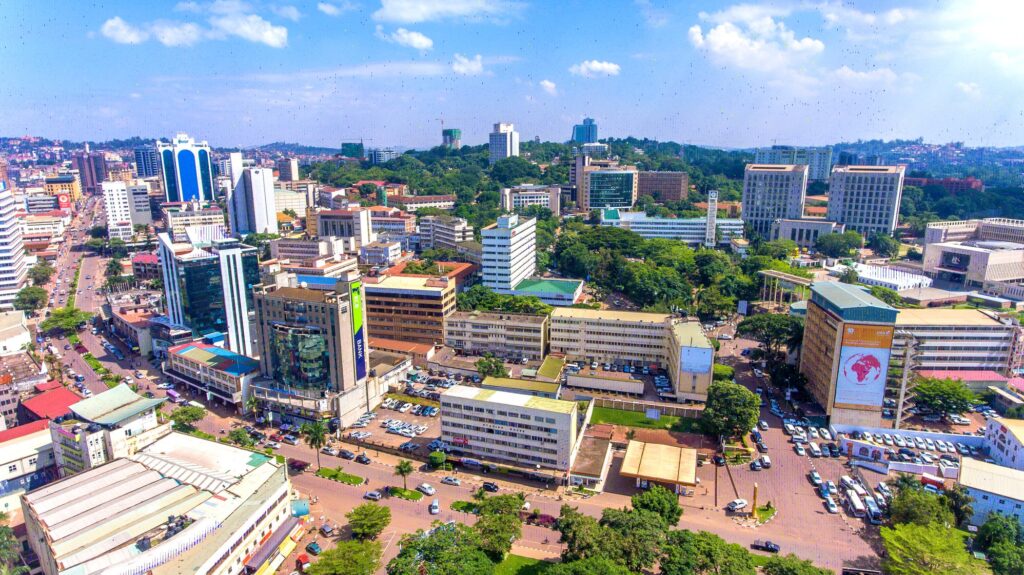
Real Sector
Annual Headline inflation slightly increased to 2.0% in June 2021 from 1.9% the previous month, largely driven by increases in prices for food and non-alcoholic beverages during the month.
Economic activity weakened in June 2021 largely on account of the implementation of restriction measures to curb the resurgent spread of Covid-19 during the month.
Similarly, sentiments about doing business, as measured by the Business Tendency Index (BTI), turned pessimistic in June 2021. The pessimism followed implementation of a second phase of the lockdown measures to mitigate the spread of Covid-19.
Financial Sector
The Ugandan shilling continued to appreciate against the US dollar. The shilling traded at an average mid-rate of Shs 3,540/USD in June 2021 compared to Shs 3,553/USD in May 2021, translating into a 0.3% appreciation.
Weighted average lending rates for both the shilling and foreign currency denominated credit increased in May 2021 and was recorded at 19.8% and 6.8% from 18.1% and 6.5% in April 2021, respectively.
Annualised yields edged downwards with 91, 182 and 364-day tenors registering 7.01%, 9.31% and 10.06% in June 2021 compared to 7.15%, 9.86% and 11.05% in May 2021. This is mainly due to a reduction in Central Bank Rate.
Government auctioned securities worth Shs 1,046.17 billion (at cost) during June 2021, out of which Shs 265.25 billion was for the refinancing of maturing domestic debt whereas Shs 780.92 billion was for financing other items in the budget. For FY 2020/21, domestic borrowing, on net basis amounted to Shs. 6,795.17 billion.
In June, during the month, there were 3 T-Bill auctions and one T-Bond auction in the primary securities market. Shs 1,046.17 billion (at cost) was raised, of which Shs 540.80 billion was from T-Bills and Shs 505.37 billion was from T-bonds. Of the amount raised, Shs 265.25 billion was issued for the refinancing of maturing domestic debt whereas Shs 780.92 billion went towards financing other items in the budget.
The stock of outstanding private sector credit declined by 0.2% from Shs17,829.5 billion in April 2021 to Shs 17,792.2 billion in May 2021. This decline was mainly due to a 2.7% drop in the stock of foreign currency denominated credit in May when compared to April 2021
External Sector
Uganda’s merchandise trade deficit widened by 50% from USD 269.25 million in April 2021 to USD 322.17 million in May 2021, reflecting stronger import demand. Compared to May 2020, the deficit widened by 123%. The wider deficit reflects a recovery in the flow of imports during May 2021 as compared to a year ago when the global economy was in lockdown.
Imports expanded by 11.7% to USD 777.39 million during May 2021 and outmatched the 6.7% growth in exports.
Fiscal Sector
Fiscal operations in June 2021 resulted into an overall deficit of Shs 1,257.84 billion which was higher than the planned deficit of Shs 164.28 billion for the month. This was on account of revenue shortfalls and the higher than planned spending during the month.
Collections on revenues and grants amounted to Shs 2,176.25 billion, representing a shortfall of Shs 424.67 billion or 16.3% against the target for the month.
Total Government expenditure amounted to Shs 3,434.09 billion representing performance rate of 124.2% against the target for the month and was driven by authorised supplementary spending undertaken.
East Africa Community
Kenya and Tanzania registered increases in annual headline inflation from 5.9% and 3.3% in May 2021 to 6.3% and 3.6%, respectively in June 2021 while Rwanda’s inflation declined from 0.4% to 0.1%.
Except for the Tanzanian shilling that remained unchanged for the month, the Kenyan shilling, Rwandan and Burundi francs all registered depreciations of 0.3% against the USD.
Uganda traded at a deficit of USD 105.31 million within the EAC region during May 2021, with Tanzania accounting for the largest share of the trade deficit. The large deficit with Tanzania more than offset the trade surpluses recorded with South Sudan, Rwanda and Burundi.
Uganda’s largest source of imports was Tanzania with USD 149.0 million followed by Kenya with USD 71.6 million while South Sudan and Kenya accounted for the largest export destinations, accounting for USD 51.5 million and USD 48.0 million, respectively.
When compared to May 2020, exports receipts from the EAC have grown by 73% from USD 67.31 million in May 2020 to USD 116.56 million in May 2021 while imports have grown by 44% from USD 153.95 million to USD 221.87 million over the same period.
Central Bank Rate
Bank of Uganda lowered the Central Bank Rate (CBR) to 6.5% in June 2021 down from the 7.0% where it had been maintained for 12 months. This is the lowest level it has been since it was first introduced in 2011. The main reasons for the reduction of the CBR was the low inflation outlook and the need to support economic growth amidst economic challenges due to the COVID-19 pandemic.
Lending rates
There was an increase in lending rates charged on both the shilling and foreign currency denominated credit in May 2021 compared to the previous month. The weighted average lending rates on shilling denominated credit increased from 18.1% in April to 19.8% in May 2021. At the same time, the rates on foreign currency denominated lending continued an upward trend to 6.8% from 6.5% over the same period. The increase in lending rates reflects increased credit risks.
Source: MoPED

